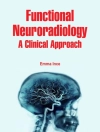This book deals with analytical models of hydrogen-induced stresses in metals. The analytical models in this second volume, which are determined for anisotropic materials, result from fundamental equations of solid continuum mechanics (Cauchy’s, compatibility, equilibrium equations, Hooke’s law). The fundamental equations are applied to such a model material system which corresponds to real metallic materials. This application includes different mathematical procedures which result in different extensive solutions for the hydrogen-induced stresses. The different solutions, which result in an energy analysis of the model system, consider mathematical boundary conditions. The boundary conditions are determined with respect to the model material system. In addition to the hydrogen-induced stresses and strains, an analytical model of a crack formation is determined. This analytical model includes mathematical definitions of crack dimensions and limit conditions of the crack formation. The mathematical procedures, which result in final formulae for the hydrogen-induced stresses, strains, elastic energy density, elastic energy and parameters of the hydrogen-induced cracking, are explained in detail. Consequently, these final formulae are also presented in detail. Finally, the results of this book are applicable within solid continuum mechanics, theoretical physics, materials science and the practice of engineering. The analytical models of the hydrogen-induced stresses can be incorporated into analytical and computational models of residual stresses, as well as into analytical models of interactions of energy barriers with dislocations and magnetic domain walls. The crack formation is usually investigated by computational methods of theoretical physics and computational mechanics, which are applied to isotropic materials. In contrast to the difficult computational methods, material engineers are able to easily determine numerical values of the hydrogen-induced stresses and cracking by the analytical models in this book with mathematical results for anisotropic metallic materials. In general, limit states represent an important phenomenon in material engineering. Consequently, analytical (mathematical) models of the limit states are a considerable contribution to materials science. Finally, this book, along with the first volume with mathematical results for the hydrogen-induced stresses and the limit conditions for isotropic metallic materials, present extensive, comprehensive and unique scientific results.
Ladislav Ceniga
Analytical Models of Hydrogen-Induced Stresses in Materials, Volume II [PDF ebook]
Analytical Models of Hydrogen-Induced Stresses in Materials, Volume II [PDF ebook]
Kup ten ebook, a 1 kolejny otrzymasz GRATIS!
Język Angielski ● Format PDF ● Strony 99 ● ISBN 9781685073398 ● Redaktor Ladislav Ceniga ● Wydawca Nova Science Publishers, Inc. ● Opublikowany 2022 ● Do pobrania 3 czasy ● Waluta EUR ● ID 8304541 ● Ochrona przed kopiowaniem Adobe DRM
Wymaga czytnika ebooków obsługującego DRM












